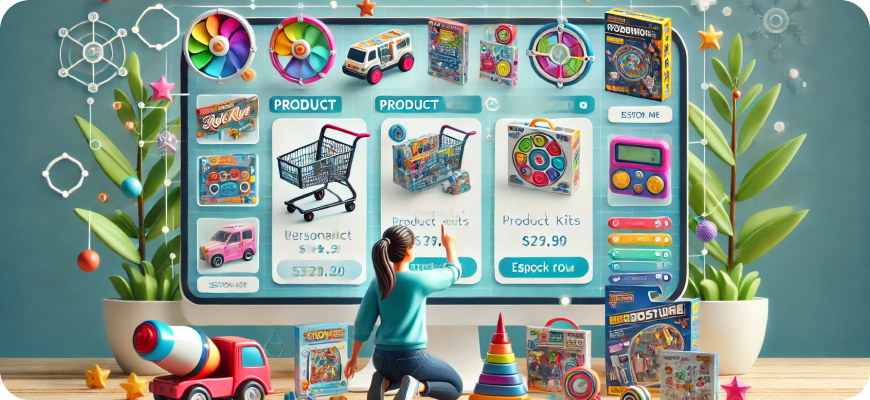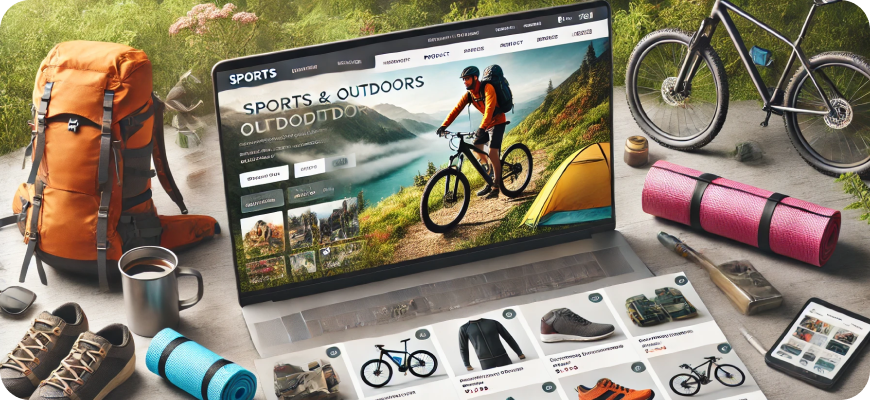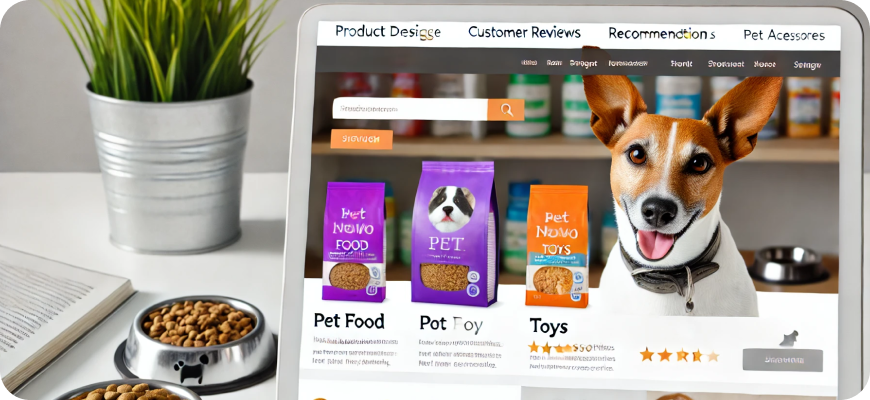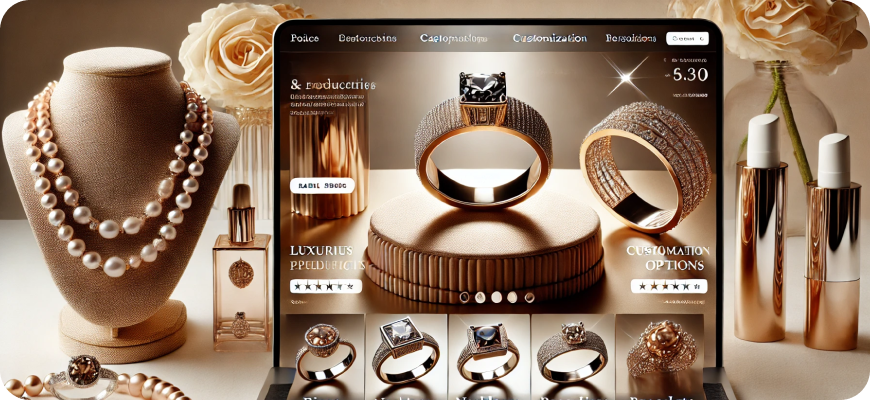Design Your Customer Journey Step by Step for Your E-Commerce
Creating a seamless and engaging customer journey is critical to the success of any e-commerce business. The customer journey encompasses every interaction a customer has with your brand, from the moment they first hear about you to post-purchase engagement and retention. Mapping out and optimizing each stage of this journey can lead to higher conversion rates, increased customer loyalty, and a more enjoyable shopping experience. In this article, we’ll explore how to design a step-by-step customer journey for your e-commerce store to ensure a smooth path from awareness to advocacy.
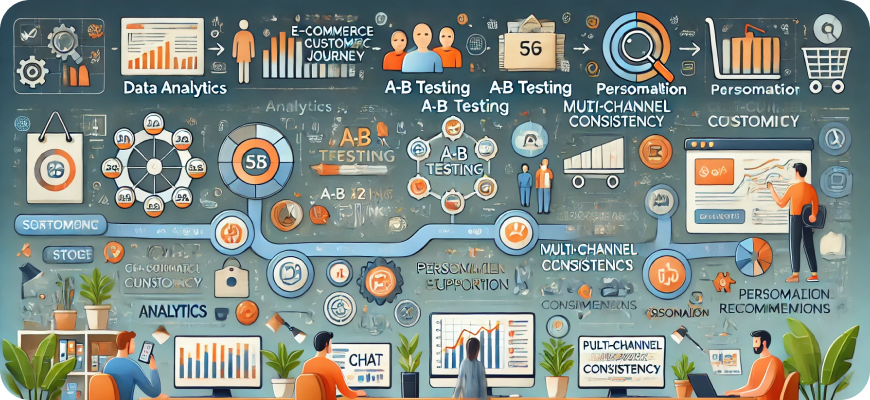
1. Awareness: Attracting Your Target Audience
The customer journey begins at the awareness stage, where potential customers first learn about your brand. The goal here is to attract and reach as many relevant prospects as possible. This stage is crucial because it’s your first chance to make an impression.
Key Tactics:
- Content Marketing: Create blog posts, videos, and social media content that provides value, educates, or entertains. Content related to your niche will attract organic traffic and help establish brand authority.
- Search Engine Optimization (SEO): Optimize your website and content to rank higher in search results. Use keywords that are relevant to your products and target audience.
- Social Media Marketing: Use platforms like Instagram, Facebook, Pinterest, and TikTok to reach your audience. Tailor your content to each platform’s strengths and engage your followers regularly.
- Paid Advertising: Utilize pay-per-click (PPC) advertising, Google Ads, and social media ads to reach a wider audience. Targeting tools allow you to display ads to people who are likely interested in your products.
Goals at this Stage:
- Increase brand visibility.
- Build a social media following and drive traffic to your website.
- Educate potential customers about your brand and products.
2. Consideration: Engaging and Educating Potential Customers
At the consideration stage, prospects are aware of your brand and may be exploring your products. This is where you need to provide more information and convince them that your product is worth purchasing.
Key Tactics:
- Product Descriptions and Imagery: Make sure product pages are detailed with high-quality images, videos, and informative descriptions. Clear, accurate product information helps build trust.
- Customer Reviews and Testimonials: Display reviews from real customers to build credibility. Social proof helps potential buyers feel confident in their decision.
- Content Marketing (Continued): Develop blog posts or videos comparing your products to others or providing valuable insights that help prospects make informed choices.
- Retargeting Ads: Use retargeting to bring back visitors who have previously shown interest in your website. Show them ads that feature products they viewed or related items.
Goals at this Stage:
- Provide in-depth information to educate the customer.
- Address potential questions or concerns about your products.
- Build trust and credibility through reviews and detailed product information.
3. Decision: Encouraging the Purchase
At this stage, potential customers are ready to make a purchase decision. Your goal here is to make the process as smooth as possible and remove any last-minute barriers that might prevent them from buying.
Key Tactics:
- Simplify the Checkout Process: Offer a quick, user-friendly checkout process. Reduce the number of steps, allow guest checkouts, and enable auto-fill options for returning customers.
- Clear Calls-to-Action (CTAs): Use strong, clear CTAs that guide customers to take the next step. Buttons like “Buy Now,” “Add to Cart,” and “Proceed to Checkout” should be prominent and easy to find.
- Offer Multiple Payment Options: Provide a variety of payment methods, such as credit cards, digital wallets, and Buy Now, Pay Later (BNPL) options, to cater to different preferences.
- Abandoned Cart Emails: If a customer leaves without completing their purchase, send a reminder email. This email can include an incentive like a discount or free shipping to encourage them to return and complete their purchase.
Goals at this Stage:
- Make it easy for customers to complete their purchase.
- Reduce cart abandonment.
- Encourage customers to proceed confidently to checkout.
4. Retention: Building a Long-Term Relationship
After a purchase, many e-commerce businesses mistakenly think the journey ends. However, retaining customers is just as important as acquiring them, as repeat customers have a higher lifetime value and cost less to retain than acquiring new ones.
Key Tactics:
- Post-Purchase Communication: Send a confirmation email, shipping updates, and a thank-you message. This helps build trust and keeps customers informed about their order status.
- Follow-Up Email Campaigns: Reach out to customers after their purchase. This could include a product review request, a product care guide, or cross-sell recommendations.
- Loyalty Programs: Encourage repeat purchases by offering a rewards or loyalty program where customers earn points for each purchase and can redeem them for discounts or freebies.
- Personalized Recommendations: Use customer data to recommend related products. For example, if a customer bought a pair of sneakers, suggest complementary items like socks or a shoe care kit.
Goals at this Stage:
- Increase customer retention and lifetime value.
- Provide a seamless and positive post-purchase experience.
- Encourage repeat purchases and build brand loyalty.
5. Advocacy: Turning Customers into Brand Ambassadors
The advocacy stage is where satisfied customers become promoters of your brand. When customers are happy with their purchase and experience, they are more likely to recommend your brand to others, either through word-of-mouth, reviews, or social media.
Key Tactics:
- Encourage Customer Reviews and Testimonials: Send follow-up emails asking customers to leave a review or share their experience. Offer an incentive, such as a discount or loyalty points, to motivate them to participate.
- Referral Program: Create a referral program that rewards customers for recommending your brand to friends and family. Offer a discount or credit for each successful referral.
- User-Generated Content (UGC): Encourage customers to share photos or videos of themselves using your products. Repost UGC on your social media channels, giving customers a sense of community and recognition.
- Engage on Social Media: Interact with customers on social platforms, respond to comments, and share their content. Building a community around your brand encourages long-term loyalty and positive word-of-mouth.
Goals at this Stage:
- Increase brand reach and attract new customers through advocacy.
- Build a loyal community of brand ambassadors.
- Drive more sales through referrals and recommendations.
Step-by-Step Customer Journey Map
Now that we’ve gone through each stage, here’s a step-by-step journey map that provides a clear framework for designing your e-commerce customer journey.
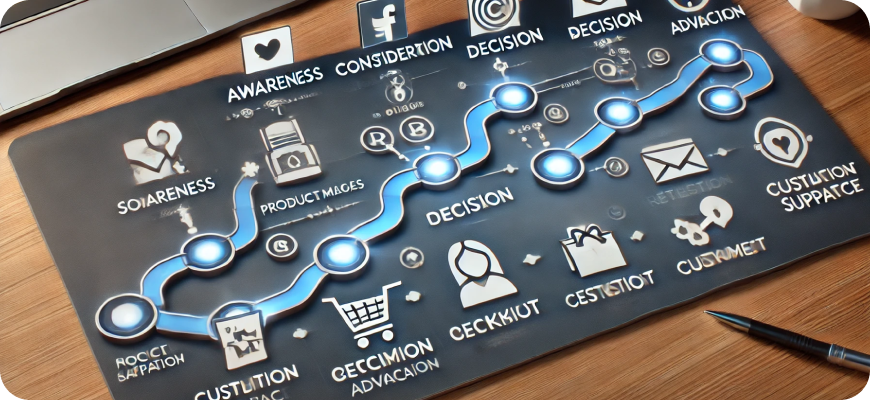
- Awareness Stage:
- Use content marketing, social media, SEO, and paid ads to increase brand visibility.
- Drive traffic to your website and engage new audiences.
- Consideration Stage:
- Engage potential customers with detailed product descriptions, customer reviews, and educational content.
- Use retargeting ads to re-engage visitors who haven’t converted.
- Decision Stage:
- Optimize the checkout process to minimize friction and ensure a smooth transaction.
- Offer multiple payment options and send abandoned cart emails to reduce cart abandonment.
- Retention Stage:
- Provide post-purchase communication and support, such as order tracking and follow-up emails.
- Implement a loyalty program and use personalized recommendations to drive repeat purchases.
- Advocacy Stage:
- Encourage customer reviews, referrals, and user-generated content to increase brand advocacy.
- Engage with customers on social media and reward loyal customers for promoting your brand.
Tips for Optimizing the E-Commerce Customer Journey
1. Leverage Data and Analytics
Use tools like Google Analytics, Facebook Insights, and customer relationship management (CRM) software to understand how customers are interacting with your site. Track metrics like bounce rate, conversion rate, and customer lifetime value to identify areas for improvement.
2. Prioritize Customer Service
Excellent customer service enhances every stage of the journey. Make it easy for customers to contact you, and provide quick, effective responses. Offer support through various channels, including live chat, email, and phone.
3. Use A/B Testing
Continuously test different elements of your website, marketing campaigns, and checkout process to find what works best. A/B testing can reveal small changes that have a significant impact on conversion rates, such as button colors, copy, and images.
4. Personalize the Experience
Personalization can boost engagement, conversions, and customer satisfaction. Use data to personalize product recommendations, email campaigns, and website content. For example, show tailored product suggestions based on past browsing behavior.
5. Make the Journey Seamless Across Channels
Today’s customers interact with brands across multiple channels—mobile, desktop, social media, and in-store. Ensure that your branding, messaging, and customer experience are consistent across all channels to create a cohesive customer journey.
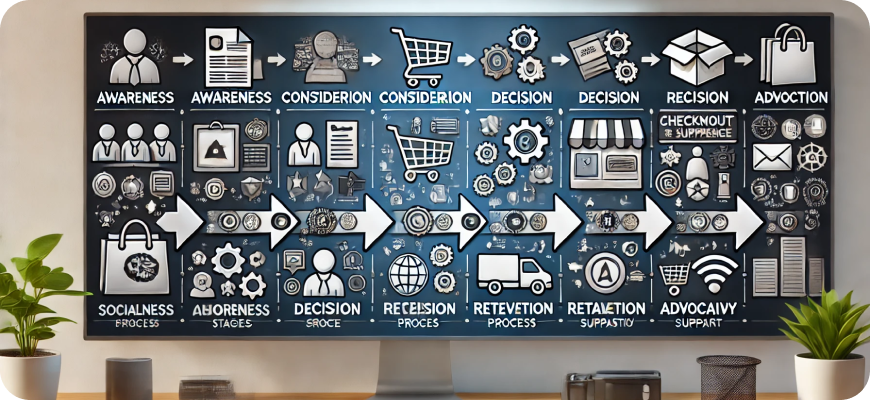
Conclusion
Designing a customer journey for your e-commerce business requires a deep understanding of your target audience and a commitment to providing an exceptional shopping experience at every touchpoint. By carefully planning each stage—from awareness to advocacy—you can guide your customers smoothly through the buying process, foster long-term loyalty, and turn one-time buyers into brand advocates. Remember to continually optimize the journey using data, personalization, and customer feedback to keep your e-commerce store aligned with evolving customer expectations. Following these steps will not only improve customer satisfaction but also drive sustainable growth and long-term success for your business.

